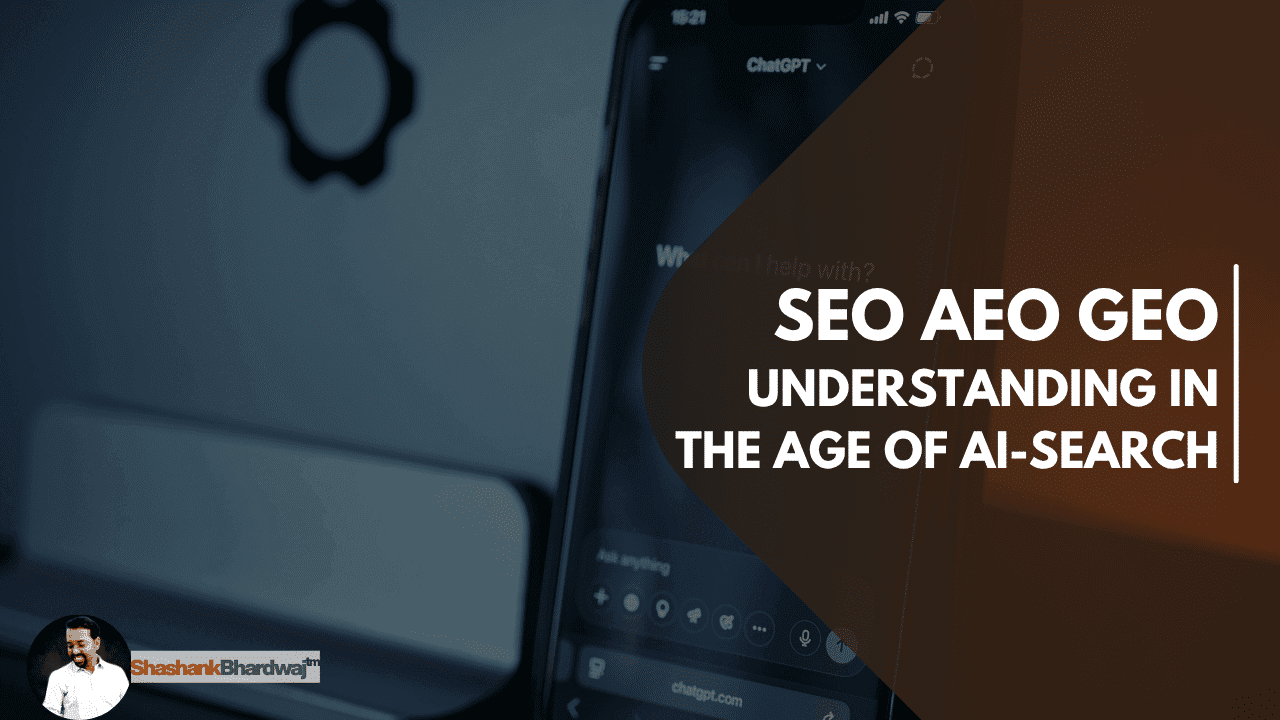Why Is My Website Traffic Going Down? – AI Search
“I’m still posting regularly — so why aren’t people visiting like before?”
If you’ve been asking these questions lately, you’re not alone.
Across industries, even established websites with consistent publishing schedules have noticed a quiet drop in traffic. A leading tech review site, for instance, kept posting about new gadgets but saw a steep decline in visits. The reason isn’t poor content or lack of effort — it’s the changing way people search.
The Hidden Shift in AI-Search Behavior
Most users don’t type your website’s URL directly. They search — through keywords, questions, or phrases — and land on your site via Google or Bing.
But search itself is changing.
Today, Generative AI (GenAI) is being integrated into search engines. People are no longer just typing queries — they’re conversing with AI-powered assistants that summarize, explain, and recommend information related to ai search.
Instead of scanning multiple links, users now get instant, conversational answers right on the AI search page — or even directly in AI browsers that combine web content with real-time AI support.
So, if your content isn’t being recognized or referenced by these AI systems, it may never reach the user — even if it ranks well on Google.
As James Cadwallader, CEO of Profound, said in Forbes:
“We’re entering an inflection point where humans no longer need to visit websites… These systems are hijacking that relationship with the end user entirely.”
The New Reality: SEO Alone Isn’t Enough
For years, traditional SEO (Search Engine Optimization) helped websites get discovered. But AI search has introduced new layers — AEO (Answer Engine Optimization) and GEO (Generative Engine Optimization).
Together, these three define how your content appears across modern search experiences.
1. Search Engine Optimization (SEO)
SEO focuses on helping your website rank in traditional search results. It’s about keywords, meta tags, page speed, backlinks, and mobile responsiveness.
The goal is simple — make your website easy for search engines to crawl, understand, and display.
2. Answer Engine Optimization (AEO)
AEO helps your content appear in AI-search generated summaries and featured snippets — the short, ready-to-read answers that appear above normal search results.
To do that, your content must:
- Use clear headings and FAQs
- Be factually accurate
- Include schema markup
- Provide concise answers to common questions
In short, AEO makes your content answer-ready for AI systems.
3. Generative Engine Optimization (GEO)
GEO takes it a step further.
It prepares your content for AI-driven conversational systems like ChatGPT, Gemini, Copilot, and Perplexity.
Here’s what it involves:
- Writing context-rich and machine-readable content
- Maintaining a consistent brand tone
- Using citations and credible sources so AI can reference your content in responses
The goal: make your website quotable and trustworthy in AI conversations.
Why AEO and GEO Are Now Taking Center Stage
Search engines are no longer just “engines” — they’re answer platforms.
According to SparkToro (2024), nearly 60% of Google searches end without a single click.
That’s because users often find what they need right inside AI summaries.
AI Overviews — Google’s generative answer feature — now appear at the top of results for most complex queries.
Research shows:
- 87.6% of AI Overviews appear in position #1
- AI impact on organic traffic decline
- Industries like healthcare, education, B2B tech, and insurance have the highest AI coverage
- E-commerce and product-based searches show less AI involvement (for now)
So yes — SEO still matters. But AEO and GEO decide whether you even appear in the AI’s summary or conversation.
Expert Voices: The Balanced Approach
Praveen Kumar, Founder of Wild Creek Web Studio, explains it best:
“AEO is the next phase of evolution. It’s about how you present information using optimized headings, bullet points, FAQs, and good content.”
He adds that SEO still remains the foundation:
“Without a strong technical structure — clean site architecture, internal linking, meta tags, and backlinks — nothing else scales.”
In other words, SEO builds the foundation, while AEO and GEO expand your visibility across AI-powered discovery.
Why Businesses Can’t Ignore AEO and GEO
Wayne Lowry, CEO of Scale By SEO, calls AEO and GEO “amplification layers on top of evergreen SEO.”
Ignoring them means you’re optimizing for a world that no longer exists.
Here’s what happens when you don’t adapt:
- Declining Visibility — AI Overviews, snippets, and chatbots pull information from AEO/GEO-optimized content first.
- Reduced Traffic — If your content isn’t cited in the AI’s summary, you’re invisible.
- Missed Opportunities — GenAI systems learn from interactions. If your content isn’t part of their loop, you’re left out of future answers.
- Outdated Metrics — Relying only on clicks or impressions hides how much you’re being mentioned or cited by AI systems.
SEO, AEO, and GEO: A Three-Layer Strategy
| Aspect | SEO | AEO | GEO |
|---|---|---|---|
| Target | Search Engines | Answer Boxes & Voice Search | Conversational AI (ChatGPT, Gemini) |
| User Intent | Find Results | Get Direct Answers | Engage in Conversations |
| Interaction | Click-through | Zero-click | No-click, AI dialogue |
| Goal | Ranking & Traffic | Visibility in Answers | Inclusion in AI Conversations |
| AI Influence | Minimal | ~75% | 100% |
Together, these three pillars ensure your brand stays visible, referenced, and trusted — across search engines and AI search.
The Rise of Conversational Search
AI is redefining how people search.
As Chris Andrew, CEO of Scrunch AI, said:
“Brands are no longer what they say they are; they’re what AI says they are.”
Search engines like Google are already testing AI Mode, where users can switch between traditional search and conversational results powered by Gemini.
By 2030, AI search engines are expected to capture over 60% of total search volume (Coherent & Gartner, 2025).
That’s where GEO truly matters — it ensures your content can participate in those AI-led conversations.
What Happens Next: Unified Content Optimization
The future isn’t SEO or AEO or GEO — it’s all three working together.
Here’s how to adapt:
- Structure Content for Both Search and AI
Use clear hierarchies, short paragraphs, and conversational cues. - Optimize Across Engines
Your audience might start on Google, continue on Gemini, and finish on Perplexity. Ensure consistency across all. - Track New Metrics
Look beyond clicks — measure AI mentions, citation frequency, and answer inclusion. - Embed Conversational Elements
Use FAQs, expert quotes, and Q&A sections — GenAI thrives on dialogue-style content. - Invest in Feedback Loops
Monitor how AI platforms interpret and summarize your pages. Adjust tone and structure accordingly.
Final Takeaway: Evolve or Vanish
SEO got you discovered.
AEO gets you cited.
GEO makes you remembered in the AI conversation.
As Josiah Roche, Fractional CMO at JRR Marketing, puts it:
“SEO sets the foundation. AEO makes content show up in modern search interfaces. GEO makes it work in AI-driven spaces where there’s no clickthrough at all.”


